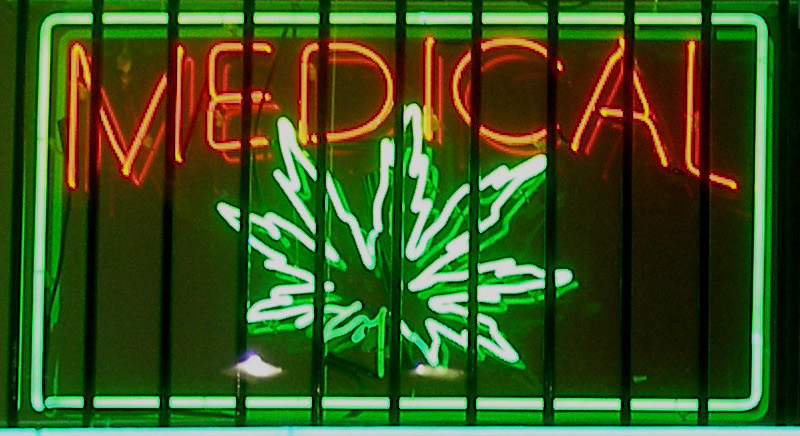Motorists who live in New York or other states that permit use of medical marijuana with a doctor’s prescription can still be charged with DWAI if the arresting officer, or in New York and other jurisdictions, a Drug Recognition Expert (DRE) has gathered enough evidence that shows the defendant’s ability to operate the motor vehicle was impaired due to ingestion of a drug. The defendant’s right to possess the drug, whether it be marijuana, oxycodone or valium for instance, has no effect on DWAI-Drug charges under Vehicle and Traffic Law § 1192(4), the approach of law enforcement officers in finding and charging drivers, or the consequences to a driver so charged and convicted. It’s important for drivers to understand the draconian police detection tactics they will be subjected to if suspected of drug impaired driving and the consequences of a misdemeanor conviction.
Proof at Trial for DWAI-Drug cases in New York State which will help the lay-person understand the complexities of this area of law. Different Judicial Departments within the state have required varied proof, often minor nuances in fact and evidence, including testimony of experts, to conclude that the People have proven beyond a reasonable doubt that the defendant has operated a motor vehicle while impaired.
ROLE OF THE DRUG RECOGNITION EXPERT
Drug Recognition Experts (DRE) are law enforcement officers trained to recognize impairment in drivers who are under the influence of drugs. A protocol, dating back to the 1970’s, was established to detect such drivers and has been refined over the years. The program is managed by the International Association of Chiefs of Police and is supported and funded by the U.S. Department of Transportation’s National Highway Traffic Safety Administration. See: http://www.decp.org/. Here is a link to New York’s list of certified DREs by county.
The protocol involves twelve standardized steps summarized as follows. If the officer on the scene concludes that a driver is impaired, but also concludes that alcohol is not the cause, he or she will then contact the DRE. The DRE arrives and interviews the arresting officer concerning the impaired driving (i.e., swerving, driving too slowly, an accident) and also the behaviors exhibited by the driver following the stop and whether the driver made any statements about drug use.
Next the DRE tries to rule out any medical conditions that may have caused the impaired driving through a series of questions about general health, prescriptions, current health emergencies, etc. The DRE take the driver’s pulse for the first of three times measuring for nervousness and whether the pulse rate increases or decreases with time. In addition, during this preliminary examination, the DRE observes the driver’s attitude, coordination, speech and breath, and also examines the driver’s pupils for size consistency. Finally in this phase, the DRE administers the horizontal gaze nystagmus test (HGN) to determine if the driver’s eyes can follow and track a moving stimulus.
After concluding that the driver isn’t experiencing a medical emergency, the DRE examines the eyes for convergence by determining if the driver is able to focus on a stimulus (pen perhaps) when it is brought inward towards the bridge of his nose. Depressants, certain anesthetics, and marijuana, among others can inhibit a driver’s convergence. Next a series of standardized field sobriety tests are administered. The claim here is that the tests—Romberg Balance, the Walk and Turn, the One Leg Stand and the Finger to Nose tests—allow the DRE to accurately conclude whether the driver’s psychomotor and/or divided attention skills are impaired.
The DRE then takes the driver’s vital signs including blood pressure, temperature, and for the second time pulse and, based on his or her training and experience, narrow the category of what type of drug the driver may have used. The DRE next examines the driver’s pupils under three distinct lighting conditions measuring the size of the pupil with a device called a pupilometer. This device measures whether the pupils are dilated or constricted, this also helps the DRE to determine which category or type of drug the driver may have used.
After examining the driver’s nasal and oral cavities, he examines the driver’s muscle tone for rigidity, as certain drugs will cause this, and then checks the driver’s body for injection sites. The driver’s pulse is then taken for a final time. According to the protocol, Miranda warnings are then given and the DRE asks the driver about his drug use and drug history. And finally, the DRE, based on the results of all of the tests and his observations, coupled with his training and experience, makes a determination as to whether the driver is impaired and what type or class of drug the driver was using. The driver is then asked to provide a urine, blood or saliva sample for toxicological examination.
TOXICOLOGICAL TESTING CAN BE UNRELIABLE TO ESTABLISH IMPAIRMENT
Determining the level of impairment drugs cause has sparked controversy. While alcohol concentration and impairment has been established with purported extensive testing and reliable statistics, very little research exists with respect to drugged-driving and impairment. Particularly with marijuana, several factors prevent an accurate assessment of correlation of Tetrahydrocannabinol (THC) levels to impairment. The predictability of a drug’s action, absorption rate, distribution and elimination rate from the body is difficult to determine at best, and it varies enormously from person to person. A particular driver may show limited or no impairment while another would exhibit extreme impairment given the same concentration of the drug. According to the National Highway Traffic Safety Administration, it is difficult to establish a relationship between a person’s THC blood or plasma concentration and performance impairing effects. The NHTSA goes on to state it is inadvisable to try and predict effects based on blood THC concentrations alone and currently impossible to predict specific effects based on THC concentrations.
Some drugs, with repeated use, will show a concentration due to an accumulation of the drug over a prolonged period of time. Marijuana is one of these drugs. In order for the drug to be properly eliminated from the blood, enough time must lapse prior to using the next dose. If this does not happen, the drug will accumulate in the blood. However, the levels do not correlate to impairment. For example, a driver who does not consistently use the drug, will show a far greater driving impairment, while repeated exposure to the drug can either result in a sensitivity or tolerance without regard to levels. Additionally, if the driver uses the drug for the first time, as opposed to a chronic or long term use, there will be a far greater impairment, although the tests will show similar levels of the drug.
Another factor to be considered is that detectable drug levels may remain higher long after any impairing effects may be measurable. In the case of THC, the drug is detectable in blood up to 7 days with regular use. However, with a first time user or single use, 90% of the THC in the bloodstream drops after the first hour, although the driver will likely be significantly impaired.
POTENTIAL CHANGES IN NEW YORK’S FUTURE
More legislation and regulations are sure to come in New York, as the roll-out of Medical Marijuana proceeds. More driver’s “driving high” will be pulled over for infractions or perceived infractions and subjected to new levels of scrutiny, which will most certainly ride the edge of constitutional permissibility. Washington, Colorado, Oregon, Alaska and Washington D.C., have legalized marijuana, making it legal for purchase, while other states have decriminalized it to varying degrees, resulting in decreased penalties for possession. However, the laws governing driving while impaired have not changed—impairment is impairment—and in some cases laws have become stricter as marijuana use becomes more prevalent, all while the laws for possession become more lenient.
Comparatively, most of the state’s laws governing DWAI lack uniformity and consistency with their approach to implementation. For instance, Washington State requires a driver to submit to testing on his or her breath or blood when the officer has “reasonable grounds” to suspect impairment. A refusal will result in license revocation of one year. The driver may have a physician or qualified person of their choice administer tests in addition to testing by officer. Additionally, the driver is allowed a limited window to contact an attorney before deciding whether or not to submit to testing. An extended delay will be considered a refusal.
Oregon law states that a person commits “the offense of refusal when they refuse to take a breath or urine test when the officer has probable cause.” The driver has the right to counsel before he may be required to decide whether to submit to testing, unless a delay would defeat the purpose of the test. In Oregon sobriety checkpoints are illegal under the constitution.
Colorado law takes driving under the influence a step further declaring if THC is identified in the driver’s blood in quantities of 5ng/ml or higher, “such fact gives rise to permissible inference that the defendant was under the influence.” Given New York’s strict approach to impaired driving offenses, it’s likely that the state will adopt a measurable standard similar to Colorado.
New Changes in California Coming
We heard from Robert Louis Miller, a practicing Orange County DUI Attorney, to interject his thoughts in relation to California’s laws. Seeing many drug DUI cases, I remember days when no one thought that marijuana was a substance that would become legal. California passed the medical marijuana act, Proposition 215, in 1996, and the trend in California, and in other states, is clearly towards making even recreational use of marijuana, as a substance, legal.
California has had a number of changes to Marijuana laws, and it seems likely that the laws will change again in 2017. Over 20 bills that deal with cannabis in some regard were introduced in the Legislature before the deadline for new laws last month, and after two major defeats last year, it doesn’t appear that laws will change this year.
However, most backing bills for this year have vowed to retool proposed laws and try again. The changes to DUI laws in 2014 that took place on January 1st of 2015 included adding a new law for narcotics only (Vehicle Code section 23152(e), and clarity in punishment for driving under the influence of a drug, whether an illegal drug, or a prescription narcotic. Many people seem to misunderstand that having a medical marijuana prescription does not mean that it’s legal to drive under the influence of marijuana.
Lawmakers, and the pharmaceutical and illegal drug manufacturers, have had somewhat of an arms race. While many new drugs are developed, and tested, (or remain untested in scientific random blind trials), politicians scramble to see what effects these substances may have on the body and nervous system, and then tentatively propose and pass new laws to make a particular drug added to the schedule of drugs that are illegal to drive under.
Kava Kava, a plant root, that is made into a tea, and has been used traditionally in ceremonies, (and casually for relaxation) in Polynesian Cultures throughout the Islands of the South Pacific, was made illegal in California a few years ago. Despite the fact that the substance appears on the shelves of pharmacies as a “natural” relaxation aid, it remains illegal to drive under the influence of Kava Kava. One defendant, charged with DUI while on Kava Kava, challenged the charge on religious grounds under a first amendment claim. That argument, like Native American religious use of peyote claims in the past, was rejected by the appeal courts in California.
With certain categories of drugs, including MDMA and similar drugs, chemists often change the molecule every time that a new law is passed, keeping many of the effects of the drug, but making the new, research drug from being technically against the law, until the law is changed to prohibit the new molecule, and the cycle begins again.
Likewise, Marijuana is defined under California law as “any part of the leaves, stems, flower, root, seeds, or any portion of any smaller part of the Cannibis plant”. However, certain processes that make the product known on the streets as “wax”, “shatter”, “honey”, “resin”, “dabs”, or anything similar, which are made by heating and then blowing a distilled product, which condenses, isolates the THC from the marijuana plant and creates a concentrate that can be smoked to consume the THC. However, this product, even under a microscope, does not contain “any part of the Cannibis plant” that is observable, and is not technically illegal, until the law changes again, which is scheduled to take place in 2017.
Driving, however, is another story entirely. Even with a medical marijuana certification, a driver cannot drive under the influence of THC, the active ingredient in marijuana. The problem is that THC can stay in the body for 30 days, and the crime labs in California generally instructed only do a presumptive test, to see if THC is in the blood or urine, or not. A driver could have consumed a marijuana edible, or smoked or ingested marijuana up to a month ago, and still be charged with DUI based upon the presence of THC. One law that was just defeated last month suggested that the level in California be changed from “the presence of”, to 2 nanograms/milligram of THC in blood, a level that would also be present in the blood long after consumption.
Crime labs in California have suggested testing for the metabolites of marijuana, which may be a more accurate test of when marijuana is consumed. THC-A and THC-B are created by the body to process marijuana, and might show when the drug was consumed more accurately than just the presence of THC in the body.
A much larger problem is that, unlike alcohol, even with an accurate measure of the amount of THC, or its metabolite, in the blood at the time of driving, there is no legal limit at which the law says it is safe, or unsafe, to be over or under with marijuana. The legislature in several states have left it to the scientific and academic community to common on what safe levels might be, but, unlike alcohol, which has testing going back to the early 1920s, for most of its history, very little marijuana research exists, because research was not legal. As one crime lab employee told me, dosing persons with marijuana and then having them drive in vehicles, which is not legal, violates several current ethical research guidelines, which no researchers are willing to do, as violation of the guidelines makes the resulting research voidable.
The Federal government also does not recognize marijuana as a legal substance, even with a medical marijuana certificate, and since most transportation and driving research is funded by the National Highway Safety Transportation Administration (NHTSA), that may not happen for quite some time. Colorado has made 5 nanograms the limit, without any scientific basis for that specific level, and as mentioned above, California tried to pass a bill to make the limit here 2 nanograms, without any success.
This current level of uncertainty is one reason why at prosecution conferences, and as research performed by the California DMV shows, marijuana DUI cases are the most difficult to prosecute, and get the highest rate of dismissals or “not guilty” verdicts. Some juries might be unwilling to convict, and even crime lab experts on the stand, who usually are called by the prosecution, have to admit that the research on marijuana and driving is unclear on impairment, and unclear on what levels are safe. That shows reasonable doubt at trial, which can mean a marijuana DUI case can be dismissed, or won at trial in an easier manner than with alcohol cases, by marijuana DUI lawyers that are familiar with the law.
CONCLUSION
A DWAI-Drug charge isn’t a violation, but a misdemeanor, and can have life-changing consequences. Nave DWI Defense Attorneys defense attorneys are uniquely qualified to represent drivers charged with DWAI-Drug offenses. The protocol that officers and Drug Recognition Experts are supposed to follow is more complex than cases involving alcohol, and without a skilled defense attorney schooled in the art of cross-examination and suppression techniques, a defendant will most certainly be at a disadvantage against the strength and weight of the prosecution. Interpretation of toxicology reports and their meaning in terms of proving impairment are still up for debate, and in the courtroom with your attorney is where these debates play out. Be well-represented.
The exclusive purpose of this article is educational and it is not intended as either legal advice or a general solution to any specific legal problem. Corporate offices for Nave DWI Defense Attorneys are located at 432 N. Franklin Street, Suite 80, Syracuse, NY 13204; Telephone No.: 1-866-792-7800. Prior results do not guarantee a similar outcome. Attorney Advertising.





